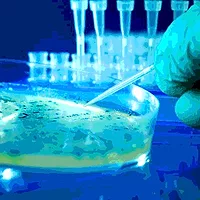7 steps to harness your hygienic design team
With an effective hygienic design team, companies can enjoy a safe, smooth-operating facility that can be cleaned effectively and efficiently.

Many of today’s food processors are adopting hygienic design principles to ease cleaning and reduce the potential for pathogen contamination. However, it can be overwhelming to identify hard-to-clean niches and potential bacteria harborage areas. In addition to food safety standards, there are worker safety and regulatory issues to consider—not to mention the costs.
Whether building a new facility or working with an existing plant, here are seven steps to form and manage an effective hygienic design team:
1. Start with top management. It is extremely important for upper management to extend their full support to hygienic design projects. Implementing hygienic design may require capital investments or operational changes that need top management buy-in. You may require production line upgrades. Equipment may need to be moved, added or replaced. Sanitation-friendly materials may come with added charges. The time to create smooth welds, install cleanable materials and eliminate hard-to-reach areas may cost more upfront. Make sure top management understands the importance of hygienic design and supports the process and associated expenditure of time and money.
2. Select a strong leader. The team needs a strong leader to manage the entire hygienic design process and delegate assignments. This individual should have a broad view of the operation, with the necessary authority and/or access to management, so decisions can be made quickly. The team leader should understand not only the plant design, but also the criteria for creating cleanable surfaces. The leader must be able to stand firm on decisions that could compromise the quality and safety of the project. The best person to lead hygienic design is often the head of quality assurance or another senior member of the quality management team.
3. Utilize a wide range of expertise. It’s important for the hygienic design team to represent different perspectives and areas of expertise. Involve every phase of the operation, including sanitation, production and maintenance. If using a contract sanitation provider, include a company representative. The people who clean the plant every night are in the best position to recommend design modifications needed to properly sanitize it. If purchasing new equipment, always include a representative from the manufacturer and a representative of the contracting company that may be doing the installation. Don’t forget internal finance and human resources teams. Make sure all team members have a voice and adequate opportunity to raise their concerns.
4. Specify goals. Identify what the hygienic design team wants to accomplish, taking into consideration food and worker safety risks, regulatory compliance and issues related to cleanability, functionality, material selection and workmanship. Consider both food contact and non-food contact surfaces. Create an action plan with timelines and assign responsibilities for completion. This action plan should include a detailed set of procedures for sanitation and maintenance because even the best hygienically designed plant still depends on people to maintain a sanitary environment for safe food production.
5. Provide regular updates. Set frequent check steps to review progress. Depending on the scope of the project, the hygienic design team may need to meet monthly, weekly or even more frequently during the height of the project. Regular communication will head off missteps and surprises and make sure timelines are met. Be sure that everyone involved is actively reviewing the construction area on a regular basis, constantly looking for potential hazards.
6. Check end results. Prior to the final cleaning and start of production, the hygienic design team should do a final walkthrough to ensure everything functions as planned. The entire team should participate in training on all aspects of cleaning, operating and maintaining new equipment and/or processes. Be sure the sanitation team conducts an intensified cleaning with anaerobic plate count, bacteria and total plate count swabs before production starts. Hold all product until the swabs are negative.
Looking for quick answers on food safety topics?
Try Ask FSM, our new smart AI search tool.
Ask FSM →
7. Continue monitoring. Even shiny new surfaces eventually get scratches and pocks that harbor pathogens and make them difficult to clean. Smart companies have ongoing hygienic design programs to keep equipment and systems up to date. This is especially important as product mixes and personnel teams change. The hygienic design team can watch for procedural shifts and remain alert to needs for equipment repairs, new air filters or other updates. Any time a change is made to the line or area, assemble the hygienic design team to review and monitor those changes.
The end game is to have a plant that delivers safe products. Avoid any shortcuts when designing food processing equipment and surfaces. Those shortcuts could lead to lost production, recalls, or in some cases, foodborne illnesses.
This article was originally posted on www.refrigeratedfrozenfood.com.







